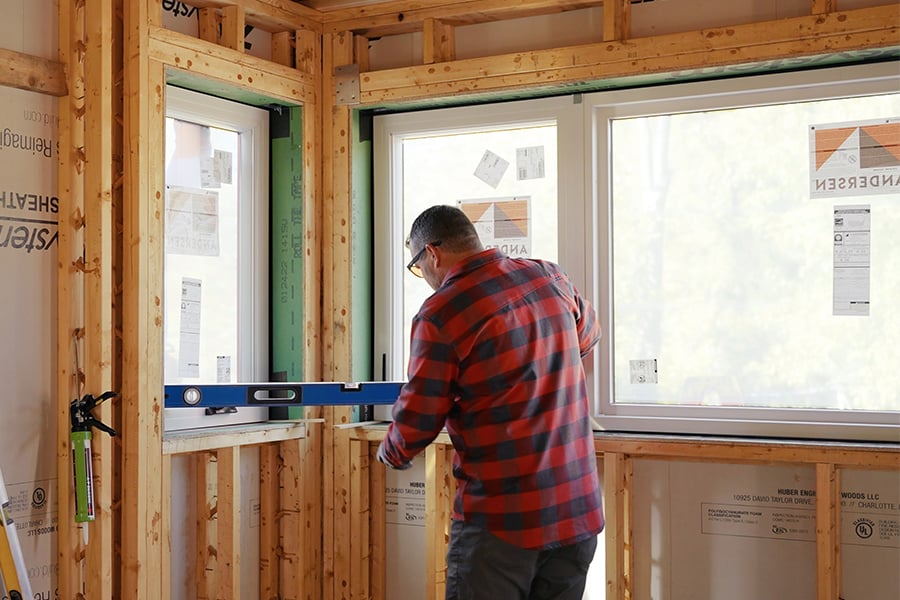Jake Bruton on 3 key elements of an energy-efficient home
An energy-efficient home doesn’t require the biggest budget when you combine technique and materials to create a high-performance package, as residential builder Jake Bruton explains in this Onsite with Andersen video.

Wall assemblies, windows, and mechanicals work together to create an energy-efficient home. That’s why Bruton considers all three one line item in a new construction home’s budget. His basic philosophy boils down to this: Spend more on the building envelope to decrease energy usage and ultimately, increase comfort for homeowners. While it’s true that the more you spend on the building envelope, the less you’ll have to spend on mechanicals, if you get the building envelope right, you don’t need to spend as much on those mechanicals.
In this video, Bruton walks us through how he creates a performance package by combining “good deliberate building technique” with “good product” — our 100 Series windows.
In the video, Bruton walked us through a new construction home his company is building in Columbia, Missouri and explained three key elements of his high-performance building package.
- Continuous air barrier: This is formed by Zip System™ sheathing on the above-grade, exterior walls; a concrete foundation; and Zip System sheathing on the ceiling of the home’s top floor. In addition, Tstud™ thermal break studs are used in place of traditional 2-by-6 studs to create a thermal break between exterior and interior.
- Energy-efficient windows: This home features our 100 Series Casement and Picture Windows. Both casement and picture windows are more efficient types of windows. Casement windows compress into their frame when the wind blows against them, and picture windows are fixed so they are more air-tight than operable windows.
- Well-placed mechanicals: Mechanicals are installed in a plenum built below the attic. The plenum is surrounded by Zip System sheathing and a vapor control layer made of Siga Majrex® adhesive tape. Housing the HVAC in this way means it doesn’t have to be as powerful or work as hard as it would in a leaky attic. It’s also conveniently out of sight for the homeowners.
Did you know the 100 Series is our most economical product line? It’s also able to withstand harsh climates and severe temperature swings — dig into the details next, or start exploring our sizing tools
“Zip System” is a trademark of Huber Engineered Woods LLC.
“Tstud” is a trademark of Roosevelt Energy, Inc.
“Siga” and “Majrex” are trademarks of SIGA Services AG.